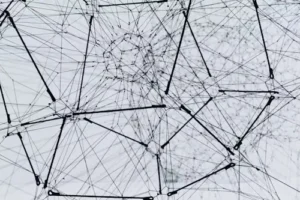Europe has one of the greatest rates of broadband penetration, and in recent years, fiber networks, VDSL, and updated cable infrastructure have all been used to move consumers to faster internet options. G.Fast-based services have also been implemented by top Norwegian ISPs Telenor and NextGenTel.
To lessen the nation’s reliance on Telenor’s networks, the regulator has urged the government to contribute to the funding of new cable infrastructure. The government suggested in late 2019 that broadband with a minimum speed of 20 Mb/s be made available to everybody. This had a substantial effect on the populus, meaning everyone could afford to stream and upload so long as they stayed within the confines of their data plans.
This summary presents the essential components of Norway’s telecom market, including data and an outline of the regulatory framework, fixed network operators and their offerings, and telecom infrastructure, with the goal of helping mobile phone users locate the most advantageous broadband plans. A summary of the major regulatory concerns, data on the major operators, and an overview of the services consumer market are all included in this synopsis that also provides a profile of the cell phone voice and data industry.

The synopsis also discusses the advancements in related technologies, including broadband powerlines, as well as the permanent or fixed-wireless broadband industries.
The Future of Broadband and Telecommunications
In the upcoming year, the telecom industry is probably going to see a decline in the manufacturing of mobile devices to varying degrees. Network operators would also find it challenging to maintain and upgrade their current infrastructure while managing workflows. In certain nations, the overall transition to 5G may be delayed or slowed down.
The financial impact of widespread job losses is putting pressure on consumer spending on telecom services and gadgets. And the constraint on disposable money that follows. Nonetheless, the importance of telecom services as a tool for working from home and for general communication will lessen these constraints. The overall result should be a consistent, if slower, rise in the number of subscribers in many areas.
The industry estimates included in this research admit that it is difficult to foresee and understand the crisis’s long-term effects as it unfolds. Visiting a mobile broadband comparison site, like https://mobilabonnement.com/mobilt-bredbånd/, could be beneficial to the subscriber, as it will detail the data plans available to them.
In order to guarantee that people may continue to utilize telecom services to the fullest extent possible, the paper also discusses the reactions of government organizations, regulators, and telecom operators to the problem. This is demonstrated, for example, by subsidy programs and the advancement of telemedicine and tele-education as alternative remedies.

Important Advances to Note
- Telenor establishes a subsidiary for smart buildings.
- The regulator holds consultations over the September 2021 proposed multi-spectrum 5G auction.
- The regulator suggests taking steps to lessen reliance on Telenor’s network.
- By 2025, Telenor plans to phase down its PSTN infrastructure and shut down its GSM and 3G networks.
- The regulator provides offshore users with access to the 700MHz and 900MHz spectrum.
- Telia uses its LTE infrastructure to reach 1 Gbps.
- Telenor plans to switch to fiber for all DSL customers by 2023 end.
- NextGenTel and Telenor are pursuing G.Fast technology.
- Municipalities can use a public Wi-Fi program sponsored by the EU.
- Telia (formerly NetCom until being renamed in 2016) and Telenor Mobil dominate the Norwegian mobile market. Tele2 controlled a portion of the partnership with Mobile Norway up to December 2013, when Tele2 was unable to win spectrum at auction. Which caused the business to sell its operations in Norway.

In line with the agreement that the telecom regulator enforced, Ice.net, a new entrant controlled by AINMT Holdings, obtained Network Norway’s user base in exchange for spectrum that it had successfully secured at auction. These providers offer voice and internet services that are complemented by an increasing number of MVNOs.
Although almost all of the nation is covered by LTE, Telenor and Telia plan to phase out their 2G and 3G networks (https://en.wikipedia.org/wiki/3G) by 2020 and 2025, respectively, in favor of LTE and 5G technology.
The 900MHz, 700MHz, and 21MHz bands, as well as the June 2019 spectrum auction, have supported the mobile broadband industry. Extra spectrum inside of 2021, the 700MHz band is anticipated to be put up for auction for 5G mobile broadband use.
Is Everyone Online in Norway?
Norway has a complex telecom industry with strong broadband and cellphone usage rates, as well as a highly industrialized internet media sector, similar to other Scandinavian nations. Despite not being a part of the EU, the nation’s telecom industry complies with applicable EC laws.
Despite growing competition from new players, Telenor remains the leading operator across all categories. Through the acquisition of Tele2, Phonero, and other enterprises, Telia Norway grew its market share and acquisitions.
Europe has one of the greatest rates of broadband penetration, and in recent years, fiber networks, VDSL, and updated cable infrastructure have all been used to move consumers to faster internet options. Additionally, G.Fast-based services have been implemented by top ISPs Telenor and NextGenTel.
The government has been urged by the regulator to assist in funding more cable infrastructure to lessen the nation’s reliance on Telenor’s networks. The administration suggested making broadband with a speed of a minimum of 20 Mb/s universal in late 2019.
In the upcoming year, there will probably be a decline in the telecom industry to varying degrees. Network operators may find it challenging to oversee procedures while maintaining and updating current infrastructure, particularly in the manufacture of mobile devices. In certain nations, the overall transition to 5G may be delayed or slowed down.
Staying Linked Up in Norway
In Norway’s larger towns and cities, you may find wifi hotspots almost anywhere (including at petrol stations, city centers, cafés, retail malls, hotels, etc.), however not all of them provide free access. An internet-connected computer may be available for guests to use, and most hotels also provide free internet connection.
Online Users
Different people use the internet in different ways. Some individuals use the internet only to check their emails, while others use it for gaming or watching movies. We created three groups since there are significant differences in how individuals utilize the internet:
- The light user of the internet: you mostly use Facebook or Instagram, read email, and browse the web. If that is the case, a download speed of 20 Mbit/s be enough.
- The intermediate internet user: A 60 Mbit/s package should be obtained if you often use the internet for streaming services like Netflix, YouTube, and others.
- The heavy-weight web surfer: Depending on what is available in your location, it might be wise to have a 100–500 Mbit/s connection if you play a lot of online games, stream movies, and download a lot.
It’s likely that different regions of Norway have different internet speeds. Larger cities typically have greater internet speeds than rural locations.
It’s time to choose your internet service provider if you’ve fallen into one of the aforementioned categories. A technician will visit your home once you sign a contract to install everything you might need in order to browse the internet.
Please be aware that, depending on when the technician is scheduled to visit your home, it may take up to two or three weeks. The broadband won’t be available until the contract has been signed by you.
